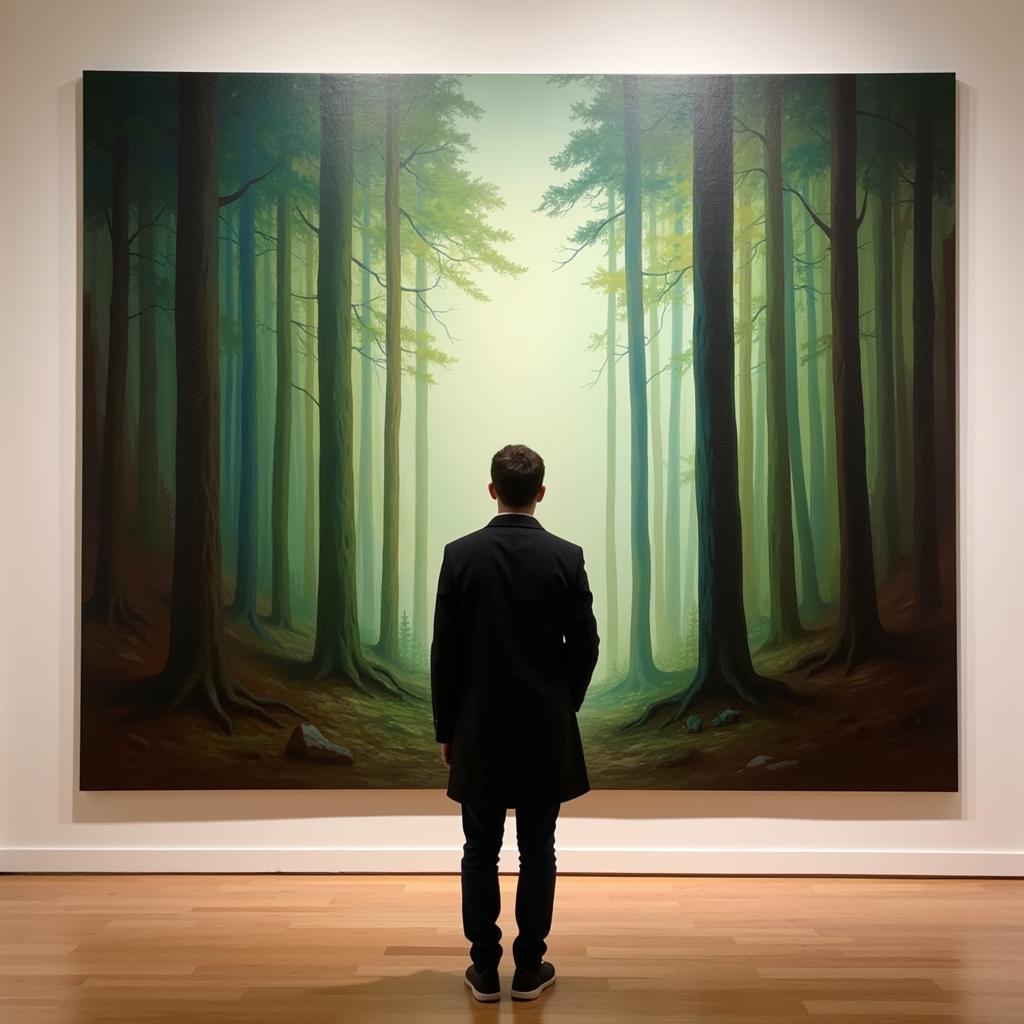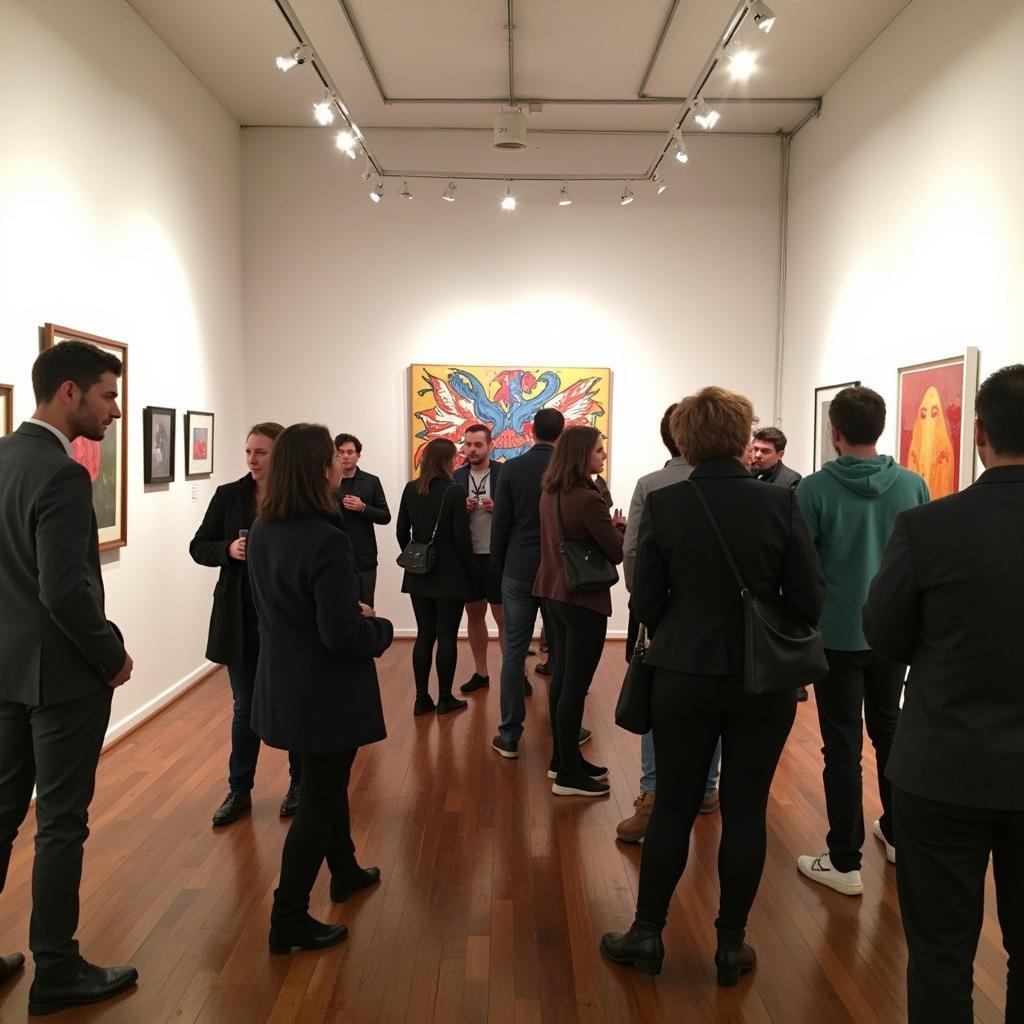Exploring Abstract Art About Nature
Abstract Art About Nature offers a powerful way to connect with the natural world through non-representational forms, colors, and textures. It’s not about depicting a realistic tree or mountain, but rather capturing the essence, the feeling, the energy of nature in an abstracted form. Within the first few brushstrokes of an abstract nature painting, a whole world of emotions and interpretations can unfold.
Let’s dive into the world of abstract art inspired by nature, exploring its history, techniques, and the profound impact it can have on both the artist and the viewer.
The Essence of Natural Abstraction
What exactly does “abstract art about nature” mean? It’s about distilling the natural world down to its core elements, focusing on the underlying principles of form, color, and composition. Imagine a wave surf art where the artist doesn’t paint a literal wave, but instead uses swirling blues and greens to evoke the feeling of crashing surf. Or consider a forest scene reduced to a symphony of vertical lines and dappled light. This is the heart of abstract nature art: using the language of abstraction to express the spirit of nature.
Expressing Emotion Through Abstract Forms
Abstract art about nature allows artists to communicate emotions and experiences related to the natural world in a way that transcends literal representation. The colors can evoke moods, the textures can suggest surfaces, and the composition can create a sense of movement and energy. Think of the vibrant yellows and oranges of a sunset, translated into a fiery abstract explosion of color. Or the cool blues and grays of a winter landscape, rendered as a series of overlapping shapes and textures.
Techniques for Creating Abstract Nature Art
Creating abstract art about nature can involve a variety of techniques. Some artists work intuitively, allowing the natural world to guide their brushstrokes and color choices. Others take a more structured approach, using specific techniques to achieve certain effects. Acrylic pouring, for example, can create beautiful, organic patterns reminiscent of flowing water or swirling clouds. Texture can also play a key role, with artists incorporating natural materials like sand, leaves, or bark into their work.
Exploring Different Mediums and Textures
Experimenting with different mediums can unlock new possibilities in abstract nature art. From watercolor’s fluidity to oil paint’s richness, each medium offers a unique way to capture the essence of nature. Consider also the possibilities of mixed media, combining paint with collage elements, found objects, or even digital techniques.
Finding Inspiration in Nature’s Palette
One of the most rewarding aspects of creating abstract art about nature is the endless source of inspiration it provides. From the vibrant colors of a coral reef to the subtle hues of a desert landscape, nature offers a boundless palette of colors and textures to explore. A simple walk in the park can spark a multitude of ideas. Notice the interplay of light and shadow, the patterns on leaves, the texture of bark. All of these can be translated into the language of abstract art.
Looking for a way to express your faith through art? Abstract Christian art can be a powerful way to connect with your spirituality. You can even find beautiful examples of green abstract canvas art to incorporate into your home decor.
The Impact of Natural Abstract Art
Abstract art about nature doesn’t just offer a creative outlet for artists; it also provides a unique way for viewers to connect with the natural world. An abstract painting can evoke feelings of tranquility, awe, or even a sense of the sublime. It can remind us of the beauty and power of nature, and our connection to it.
 The Impact of Natural Abstract Art
The Impact of Natural Abstract Art
Conclusion: Embracing the Abstract Nature Within
Abstract art about nature is a powerful and evocative way to express the beauty, complexity, and energy of the natural world. By moving beyond literal representation, artists can tap into the deeper essence of nature, creating works that resonate with viewers on an emotional and spiritual level. So, next time you’re out in nature, take a moment to observe, to feel, and to imagine how you might translate those experiences into the language of abstract art. And if you’re looking for a unique piece of art to decorate your space, you might even consider adding a humpback whale art or some art skateboard decks to your collection.
FAQs
-
What is the difference between abstract art and representational art? Representational art aims to depict the world realistically, while abstract art uses form, color, and composition to express ideas and emotions in a non-representational way.
-
How can I get started with abstract nature art? Start by observing nature closely, paying attention to colors, textures, and patterns. Experiment with different mediums and techniques, and don’t be afraid to let your intuition guide you.
-
What are some famous abstract artists who were inspired by nature? Wassily Kandinsky, Paul Klee, and Georgia O’Keeffe are just a few examples.
-
Where can I find inspiration for my abstract nature art? Nature itself is the best source of inspiration! Take walks in the park, visit botanical gardens, or simply observe the world around you.
-
How can I interpret abstract art about nature? There is no single right answer. Allow yourself to respond to the artwork emotionally and intuitively. What feelings does it evoke? What does it remind you of?
For further assistance, please contact us at Phone Number: 02462573573, Email: danteum@gmail.com or visit us at Savico Megamall, 7-9 Đ. Nguyễn Văn Linh, Gia Thụy, Long Biên, Hà Nội 10000, Việt Nam. We have a 24/7 customer service team.
